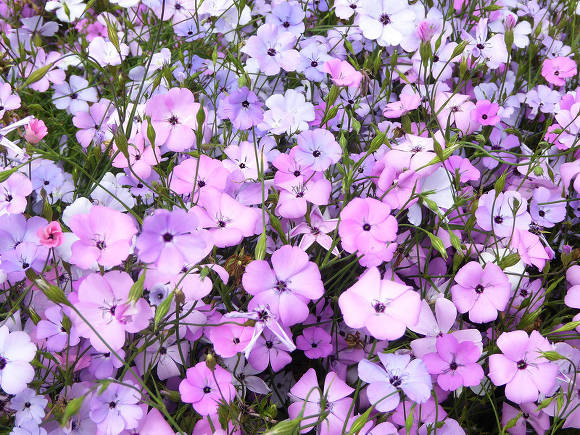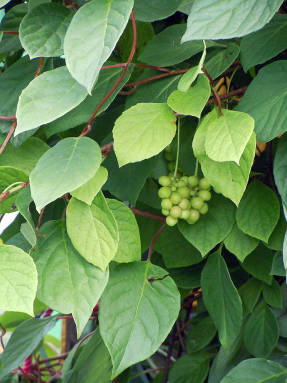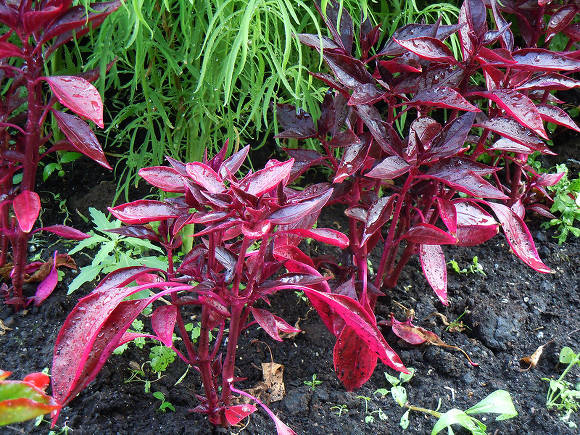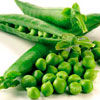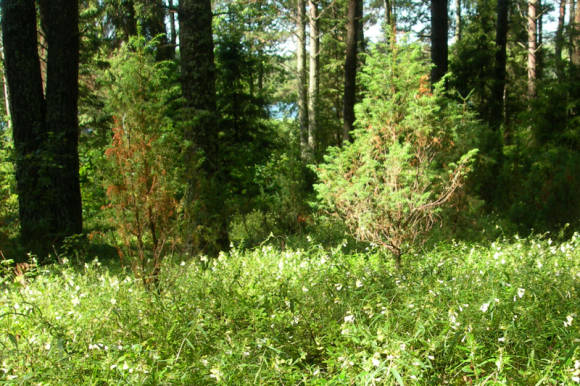 Why do junipers planted in autumn remain green during winter, and sometimes completely dry out in spring? When they are transplanted, the root system is inevitably injured. Especially severe damage occurs when transplanting large specimens with an open root system. Dried or chopped off small root tips in junipers do not regenerate well. Our Central Russian common juniper(Juniperus communis) especially capricious. Creeping junipers horizontal and Cossack(Juniperus horizontalis, Juniperus sabinus) in general, they are more unpretentious, although extreme caution is necessary with their transplant.
Why do junipers planted in autumn remain green during winter, and sometimes completely dry out in spring? When they are transplanted, the root system is inevitably injured. Especially severe damage occurs when transplanting large specimens with an open root system. Dried or chopped off small root tips in junipers do not regenerate well. Our Central Russian common juniper(Juniperus communis) especially capricious. Creeping junipers horizontal and Cossack(Juniperus horizontalis, Juniperus sabinus) in general, they are more unpretentious, although extreme caution is necessary with their transplant.
During autumn and winter, air humidity is high, and the stomata of conifers are closed. The water does not evaporate and the juniper looks green. In spring, first of all, the air warms up: the stomata open, but the damaged root system cannot extract water from the cold earth. A physiological drought sets in: the roots extract less moisture than the needles evaporate. Under these conditions, juniper can dry out very quickly. Physiological drought can also occur in the fall if the soil has cooled down and the air is still warm.
To avoid such troubles, if possible, conifers should be purchased in containers. If you transplant your own plants, it is better to preserve a clod of earth as much as possible, preventing the substrate from shedding from the roots. The larger the transplanted specimen, the higher the risk. In no case should you transfer large junipers from the forest to the site: the roots will certainly be damaged, and the risk in these cases is especially high.
The death of junipers is also possible from the cold. Some species and forms that are now on sale are not sufficiently stable in our climate and can freeze out in severe winters.
What time of year is it better to replant junipers? The timing of transplanting depends on the ability to form new roots, which changes throughout the year. In yews, for example, the rooting of cuttings occurs only after winter cooling; without this, only callus develops. Therefore, autumn will be the best planting time for yews.
Junipers have two periods with maximum root-forming ability: early spring (March-April) and mid-summer (June-July). Summer transplanting is less desirable, since the needles evaporate a lot of water in hot weather. It is best to transplant the juniper in the fall, and it will take root in early spring.
The following summer transplant technology can be recommended. Carefully dig in a circle around the juniper, remove it and plant it in an appropriately sized container. Place in a thick shade in a greenhouse or under a plastic film, and it is better to dig the container into the ground. In a few months, the plant adapts. Gradually accustom him to the open air and at the end of summer, plant him in a permanent place, shading from the sun for the first time.
Chub V.V.,



